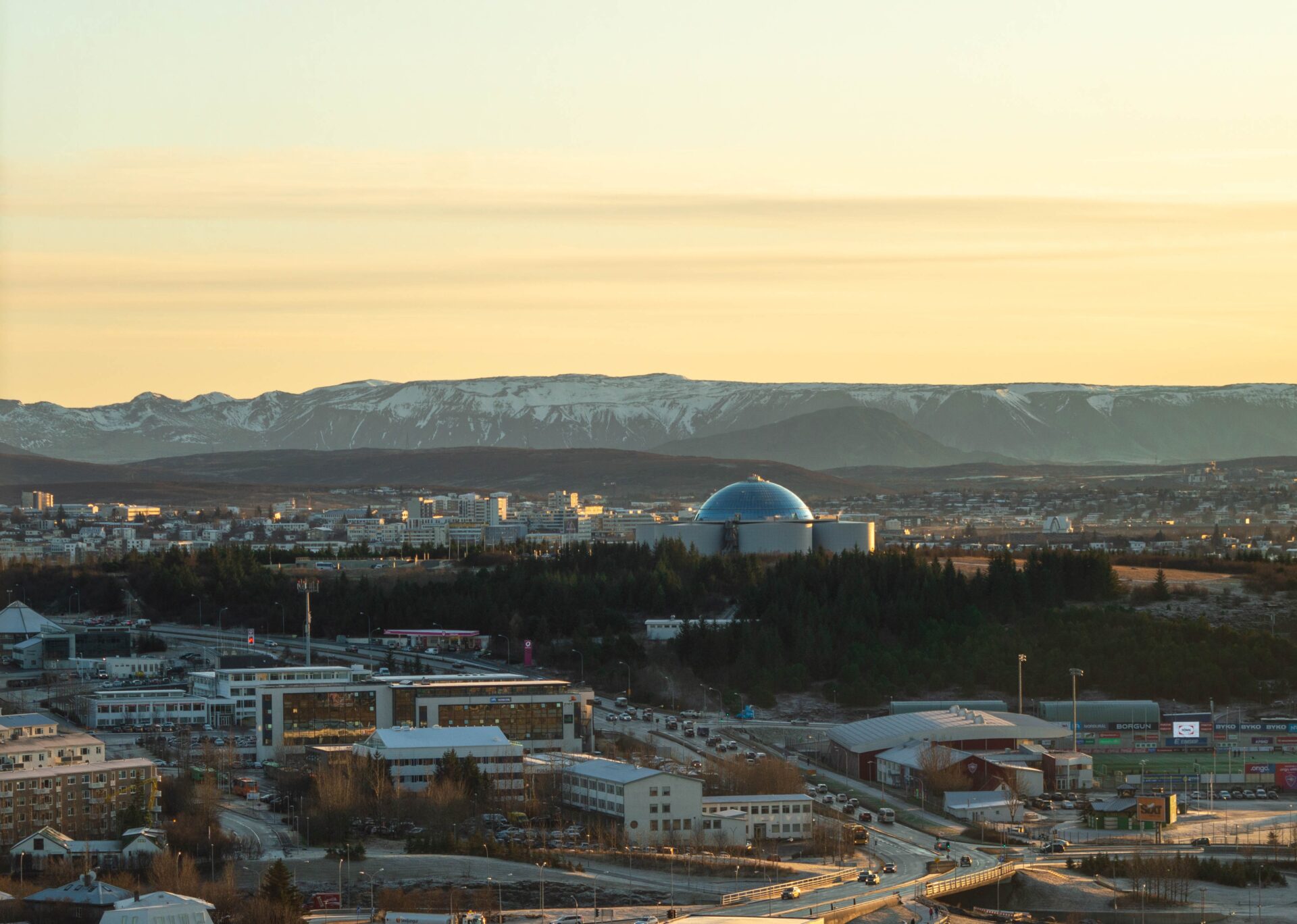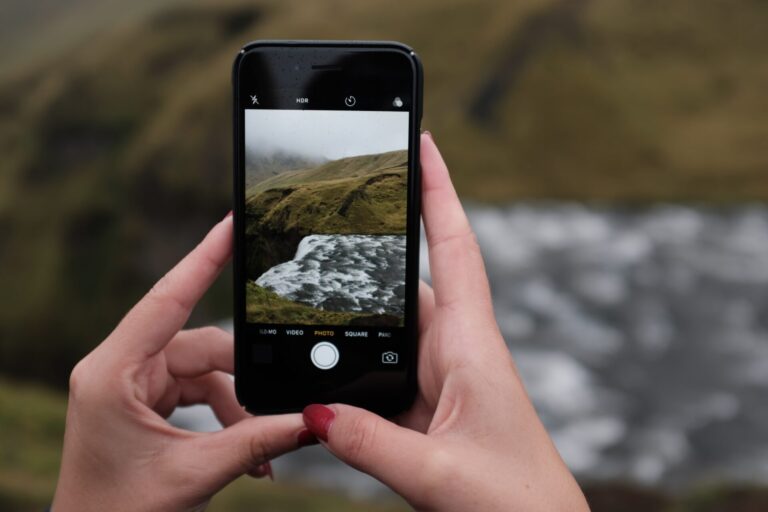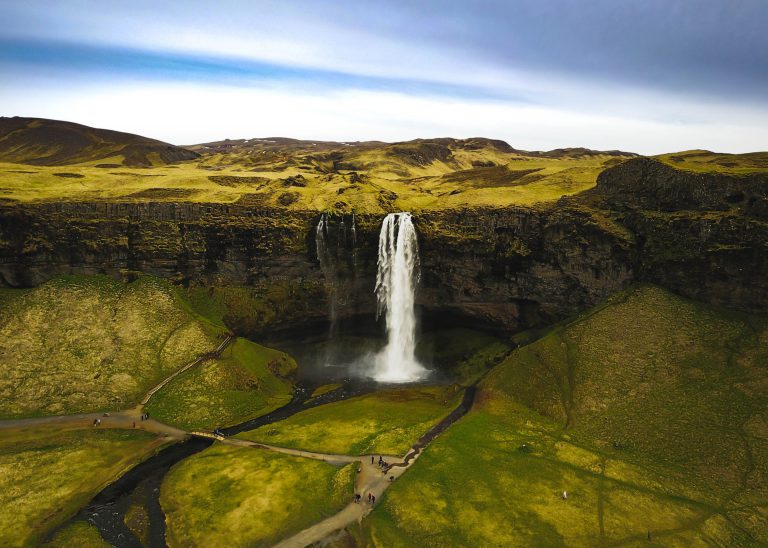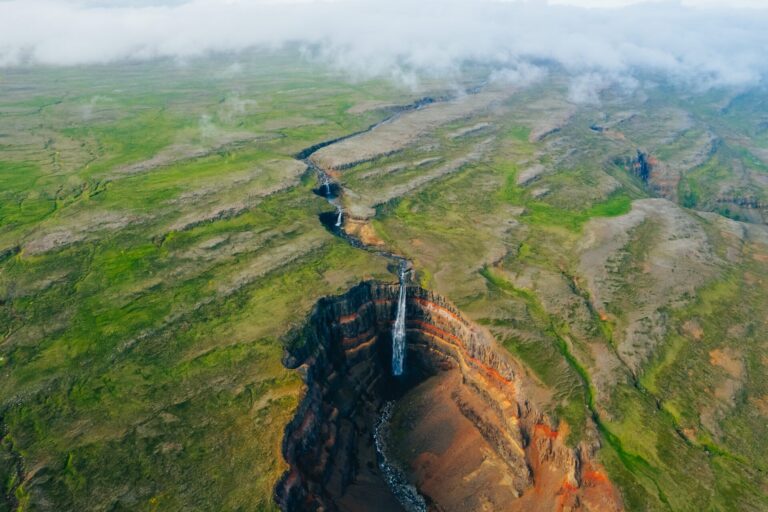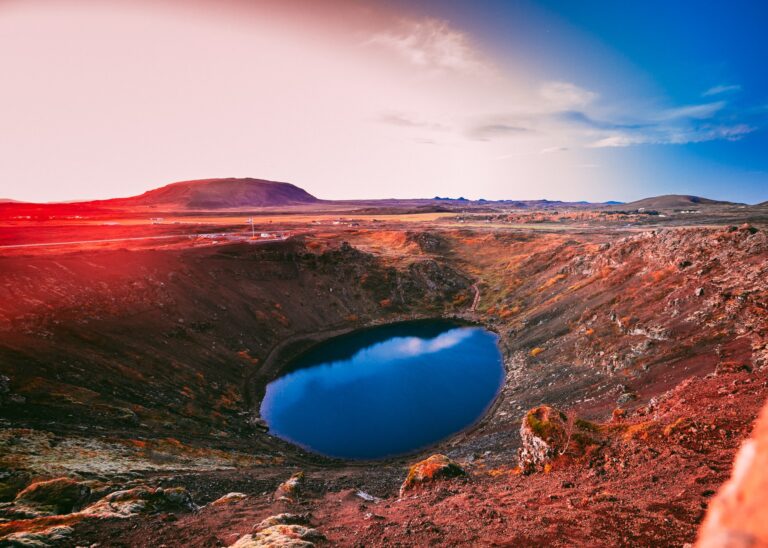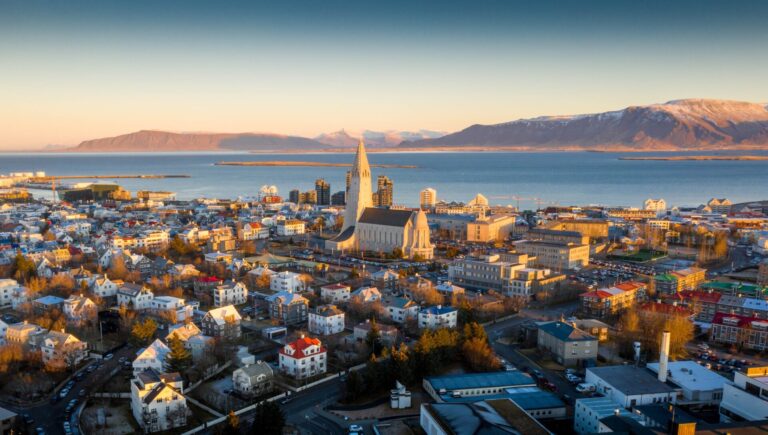Travel guide to the Perlan Museum in Iceland
If you are planning on visiting Iceland, the Perlan Museum should definitely be on your list of must-visit places. Situated on top of Öskjuhlíð Hill, one of Reykjavik’s highest points, this unique museum offers breathtaking panoramic views of the city, while also showcasing the natural wonders of Iceland.
The Perlan Museum is divided into several exhibitions, each focusing on a different aspect of Iceland’s natural wonders. From a simulated ice cave to a replica of a geysir, visitors can explore Iceland’s glaciers, volcanoes, geology, and wildlife.
The museum also features an observatory deck, where visitors can get a 360-degree view of the city and beyond. In addition, the museum hosts a planetarium, which screens informative documentaries and presentations about the cosmos and space exploration.
Page Contents
Perlan Museum
The Perlan Museum is one of Iceland’s most visited tourist destinations, and for good reason. The museum, which opened in 2017, is located on top of Öskjuhlíð Hill, which is a natural geothermal hot spot and one of Reykjavik’s highest points. It boasts stunning panoramic views of the city, the ocean, and the surrounding mountains, which are sure to take your breath away.
What makes the Perlan Museum so special is its unique focus on Iceland’s natural wonders, particularly its glaciers and geology. The museum is housed in a striking glass dome structure, which was built around six hot water tanks that once served as a key part of Reykjavik’s geothermal heating system. These tanks were repurposed to create a one-of-a-kind indoor glacier and ice cave, which visitors can explore and learn about Iceland’s glacial history.
In addition to the indoor glacier, the Perlan Museum also features interactive exhibits that showcase Iceland’s diverse geology, flora, and fauna. Visitors can explore a simulated volcano, observe a replica of a geysir in action, and learn about Iceland’s unique wildlife. The museum also boasts a state-of-the-art planetarium, which features educational shows about the cosmos and space exploration.
The Perlan Museum is not just a fun and educational attraction, but it also holds significant importance for Iceland. The museum is dedicated to preserving and educating visitors about Iceland’s natural resources and how they contribute to the country’s economy and culture. Iceland is known for its geothermal energy, and the Perlan Museum serves as a hub for research and innovation in this field.
Moreover, the Perlan Museum is committed to sustainability and environmental conservation. The museum’s architecture incorporates eco-friendly features such as a rainwater harvesting system and a geothermal heating and cooling system. Additionally, the museum’s exhibits educate visitors about the importance of environmental conservation and sustainable practices.



Basic facts about Perlan
The Perlan Museum is located in the capital city of Reykjavik, at an altitude of 61 meters on top of Öskjuhlíð Hill. The museum spans an area of 28,000 square meters, with its most unique feature being a 10-meter deep indoor ice cave. This cave houses a replica of an actual ice tunnel found in one of Iceland’s glaciers, allowing visitors to experience the glacial environment in a controlled and safe setting.
| Region | Reykjavik |
| Altitude | 61 meters |
| Size | 28,000 square meters |
| Depth | 10 meters (ice cave) |
| Type | Museum |
| GPS coordinates | 64.1433° N, 21.9267° W |
| Other Names | Perlan Museum of Iceland, Wonders of Iceland |
Legends around Perlan Museum
While the Perlan Museum is a relatively new attraction in Iceland, there are still some legends and stories surrounding the location where it is built. The Perlan building is situated on top of Öskjuhlíð hill, which has long been a site of mystery and intrigue in Icelandic folklore.
One legend tells the story of a hidden treasure buried somewhere on the hill. According to the tale, a wealthy merchant who lived in Reykjavik during the 19th century buried a large sum of money on the hill to protect it from raiders who were plaguing the city at the time. The merchant died without revealing the location of the treasure, and to this day, it remains undiscovered.
Another legend surrounding the hill relates to the hidden people, or elves, who are said to inhabit the area. According to local folklore, the hidden people are supernatural beings who live in the hills and rocks around Iceland. Many Icelanders believe that the hidden people can cause mischief or bring good fortune, depending on their mood. Some people claim to have seen the hidden people on Öskjuhlíð hill, and there are even stories of construction projects being halted or altered due to fears of disturbing the hidden people’s homes.
While these legends may not be directly related to the Perlan Museum itself, they add to the sense of mystery and wonder that surrounds the location. Visitors to the Perlan Museum can enjoy not only the breathtaking views from the hilltop, but also the rich cultural heritage and natural wonders of Iceland that the museum showcases.
How to reach Perlan Museum (Map)
Reaching the Perlan Museum is relatively easy, as it is located in a central area of Reykjavik and is well-connected to the city’s transport system. Whether you’re traveling by car or by public transport, there are several options available to get to the museum.
By Bus: The most convenient way to get to the Perlan Museum by bus is to take the number 18 or 24 bus, which stops right outside the museum. These buses run regularly throughout the day, and you can check the schedule on the Strætó website or app. If you’re staying in downtown Reykjavik, you can also take the City Sightseeing Hop-On Hop-Off bus, which stops at the museum as part of its tour.
By Car: If you’re driving to the museum, you can use the GPS coordinates (64.1401° N, 21.9269° W) or the address (Perlan, Öskjuhlíð, 105 Reykjavík) to navigate to the location. There is a large parking lot at the museum, and parking is free for museum visitors.
Other Alternatives: For those who enjoy walking or cycling, it is also possible to reach the museum by foot or by bike. There is a scenic walking trail that leads up to the museum from the nearby Nauthólsvík beach, which takes approximately 45 minutes to walk. Alternatively, you can rent a bike from one of the many rental shops in Reykjavik and cycle up to the museum.
When to visit Perlan
The best time to visit the Perlan Museum in Iceland depends on what kind of experience you are looking for.
During summer, the weather is generally warmer and brighter, which makes it an excellent time to explore the outdoor observation deck and take in the breathtaking panoramic views of Reykjavik. The long days also mean more time for exploration, with the museum being open until 10 pm from June to August.
However, if you’re interested in seeing the Northern Lights, you’ll want to plan your visit during the winter months when the nights are longer and darker. The Perlan Museum is open until 9 pm from September to May, giving you plenty of time to explore before heading out for some aurora hunting.
Regardless of the season, we recommend visiting the museum during the daytime hours to fully appreciate the stunning views of Reykjavik from the observation deck. Mornings tend to be less crowded, while afternoons can get busier with tourists.
Accommodations near Perlan
When visiting the Perlan Museum, there are plenty of accommodation options to choose from in both the neighborhood and the capital city of Reykjavik.
Staying in the neighborhood around Perlan, which is called Öskjuhlíð, is a great option if you want to be close to the museum and the nature around it. One option is the Reykjavik HI Hostel, located just a short walk away from Perlan. This hostel offers comfortable and affordable accommodation in a peaceful setting, perfect for those who want to enjoy nature while still being close to the city.
If you prefer to stay in the capital, there are numerous hotels, guesthouses, and Airbnb options to choose from. One popular hotel is the Icelandair Hotel Reykjavik Natura, located just a 10-minute drive from Perlan. This hotel offers comfortable rooms, a restaurant, and a bar, as well as a spa and a fitness center.
Another option is the CenterHotel Midgardur, located in the heart of Reykjavik and only a 15-minute drive from Perlan. This hotel offers stylish and modern rooms, a restaurant, a bar, and a fitness center, making it a great choice for those who want to be close to the city’s attractions and nightlife.
What to do at Perlan
Visitors to the Perlan Museum in Iceland can expect an immersive experience that showcases the country’s natural wonders and cultural heritage. One of the most popular activities at the museum is the Wonders of Iceland exhibit, which features an artificial ice cave, interactive displays, and a 360-degree viewing platform that provides panoramic views of Reykjavik and the surrounding landscapes. Additionally, visitors can enjoy the Northern Lights planetarium show, which simulates the aurora borealis using cutting-edge technology.
Beyond the museum itself, the Perlan area offers a range of activities for visitors to enjoy. Those interested in outdoor adventure can take a hike on the nearby Öskjuhlíð Hill, which offers stunning views of the city and the ocean.
There are also several parks and botanical gardens in the area, including the Ásmundarsafn sculpture garden and the Reykjavik Family Park and Zoo. And for those seeking a taste of Icelandic culture, there are several museums and galleries in the neighbourhood, including the Árbær Open Air Museum and the Reykjavik Art Museum.
Other attractions near Perlan
There are many other attractions near the Perlan Museum that visitors can explore during their trip to Iceland. One such attraction that is particularly interesting for photographers is the Nauthólsvík Geothermal Beach, located just a short distance away from the museum.
Nauthólsvík is a beautiful man-made beach that features a hot tub and a small geothermal pool, both of which are heated using Iceland’s natural geothermal energy. The beach is a popular spot for locals and visitors alike, and its unique blend of hot and cold water makes it a popular spot for photographers looking to capture stunning photos of Iceland’s natural beauty.
In addition to the beach, visitors can also explore other nearby attractions, such as the iconic Hallgrímskirkja church, which offers stunning panoramic views of Reykjavik, or the picturesque harbor area, which is home to a variety of shops, restaurants, and galleries.
We also created an Iceland Attractions Map to help you plan your trip and find your way around the country. It includes information on popular attractions, hidden gems, and practical information such as transportation, parking, and Airbnb options. Below our favorite spots!
- Seljalandsfoss Waterfall: a 60 meters tall waterfall, part of Seljalands River.
- Kerid Crater lake: a lake inside a volcanic crater, surrounded by colorful volcanic rock
- Fjadrargljufur Canyon: a 100 meters deep and 2 kilometers long canyon, formed by erosion from the Fjadrárgljúfur River, known for its rock formations and colorful walls.
Photographing Perlan
If you’re a photographer planning to visit the Perlan Museum in Iceland, there are a few things to keep in mind when capturing images of this stunning attraction. Here are some answers to your questions:
Firstly, drone flying is allowed in Iceland, but there are certain rules and restrictions to follow. Make sure to check the drone laws and regulations before flying near the museum, as there may be specific no-fly zones in the area.
As for camera gear, it’s recommended to bring a wide-angle lens to capture the vastness of the surrounding landscape, as well as a telephoto lens for zooming in on specific details. A tripod or gimbal stabilizer can also be helpful for creating steady shots and smooth video footage.
When it comes to camera settings, it really depends on your personal preference and the lighting conditions at the time of your visit. However, shooting in manual mode can give you greater control over your images, especially if you want to adjust the aperture and shutter speed. Keep in mind that the weather in Iceland can change quickly, so be prepared to adjust your settings accordingly.
The best time to photograph the Perlan Museum is during the “golden hour,” which is the hour before sunset and after sunrise when the light is softer and more golden. However, the museum looks spectacular at any time of day, so don’t limit yourself to these times.

